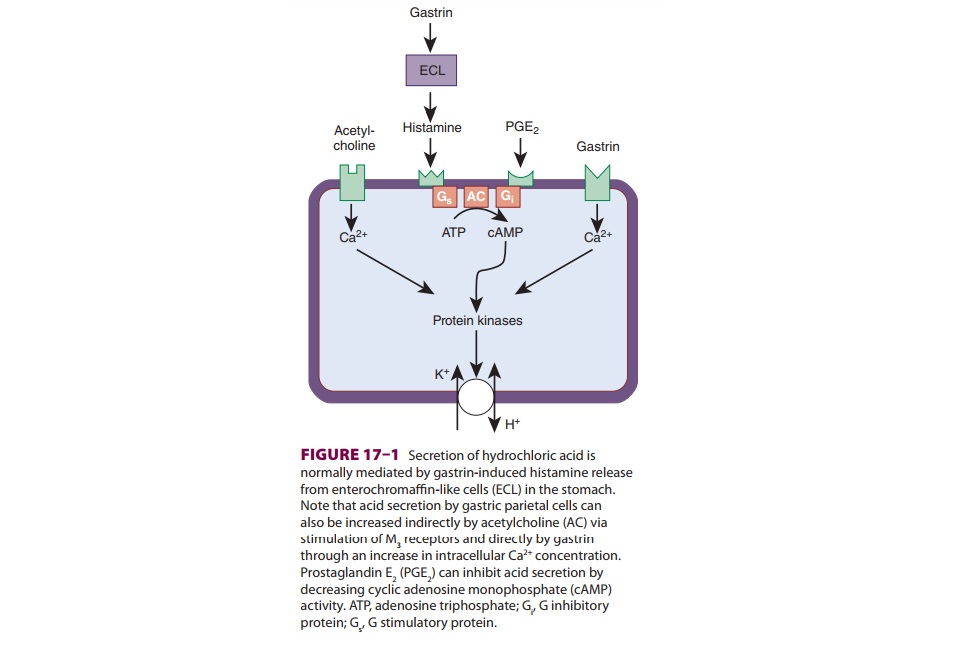Chapter: Clinical Anesthesiology: Clinical Pharmacology: Adjuncts to Anesthesia
Aspiration: Histamine Receptor Antagonists

HISTAMINE RECEPTOR ANTAGONISTS
Histamine Physiology
Histamine is found in the central
nervous system, in the gastric mucosa, and in other peripheral tissues. It is
synthesized by decarboxylation of the amino acid histidine. Histaminergic
neurons are primarily located in the posterior hypothalamus but have wide
projections in the brain. Histamine also normally plays a major role in the
secretion of hydrochloric acid by parietal cells in the stomach ( Figure 17–1).
The highest concentrations of histamine are found in the storage granules of
circulating basophils and mast cells throughout the body. Mast cells tend to be
concentrated in connective tissue just beneath epithelial (mucosal) surfaces.
Histamine release (degranulation) from these cells can be triggered by
chemical, mechanical, or immunological stimulation

Multiple receptors mediate the effects
of hista-mine. The H1 receptor activates phospholipase C,
whereas the H2 receptor increases intracellular cyclic
adenosine monophosphate (cAMP). An H 3
receptor is primarily located on histamine-secreting cells and mediates
negative feedback, inhibiting the synthesis and release of additional
histamine. Histamine-N-methyltransferase
metabolizes histamine to inactive metabolites that are excreted in the urine.
A. Cardiovascular
Histamine reduces arterial blood
pressure but increases heart rate and myocardial contractility. H1-Receptor stimulation increases capillary
perme-ability and enhances ventricular irritability, whereas H2-receptor stimulation increases heart rate and
increases contractility. Both types of receptors medi-ate peripheral arteriolar
dilation and some coronary vasodilation.
B. Respiratory
Histamine constricts bronchiolar smooth
muscle via the H1 receptor. H 2-Receptor stimulation may pro-duce mild
bronchodilation. Histamine has variable effects on the pulmonary vasculature;
the H1 recep-tor appears to mediate some
pulmonary vasodila-tion, whereas the H 2
receptor may be responsible for histamine-mediated pulmonary vasoconstriction.
C. Gastrointestinal
Activation of H2 receptors in parietal cells increases gastric acid
secretion. Stimulation of H 1 receptors leads to contraction of
intestinal smooth muscle.
D. Dermal
The classic wheal-and-flare response of
the skin to histamine results from increased capillary perme-ability and
vasodilation, primarily via H 1-receptor activation.
E. Immunological
Histamine is a major mediator of type 1
hypersen-sitivity reactions. H 1-Receptor stimulation attracts
leukocytes and induces synthesis of prostaglandin. In contrast, the H2 receptor appears to activate sup-pressor T
lymphocytes.
Related Topics